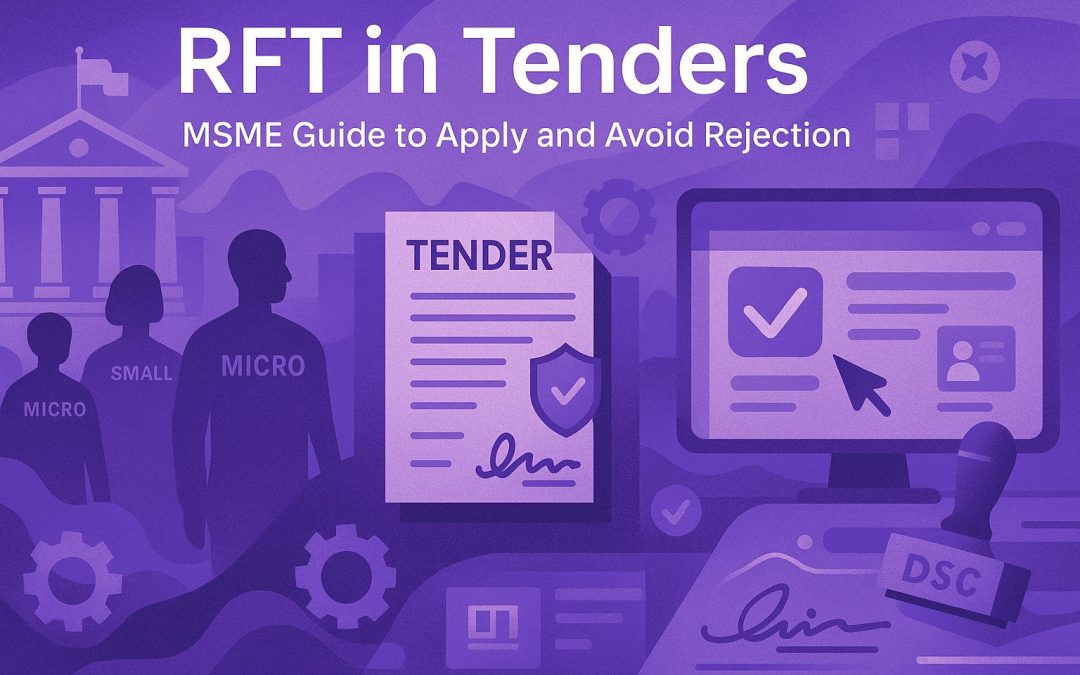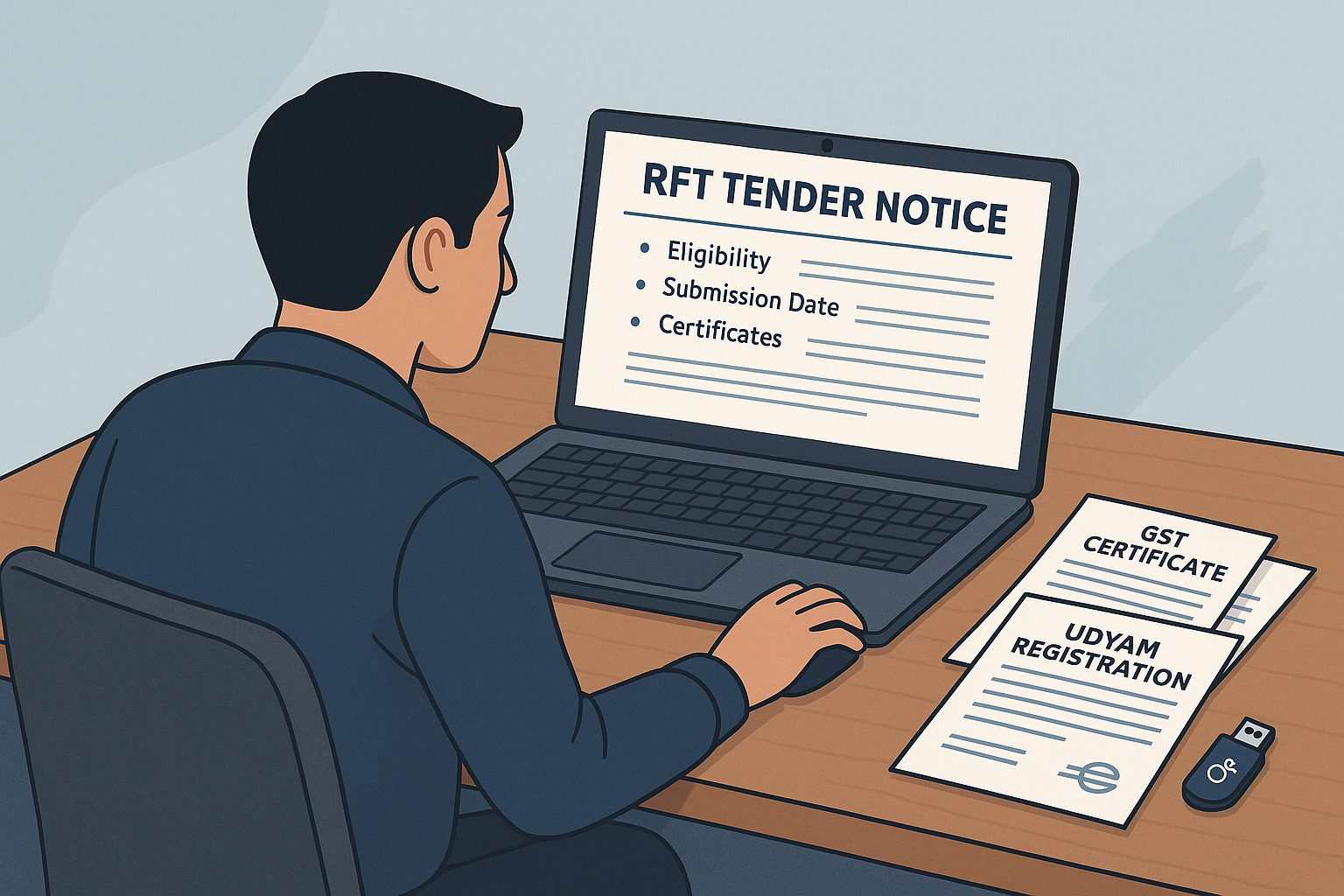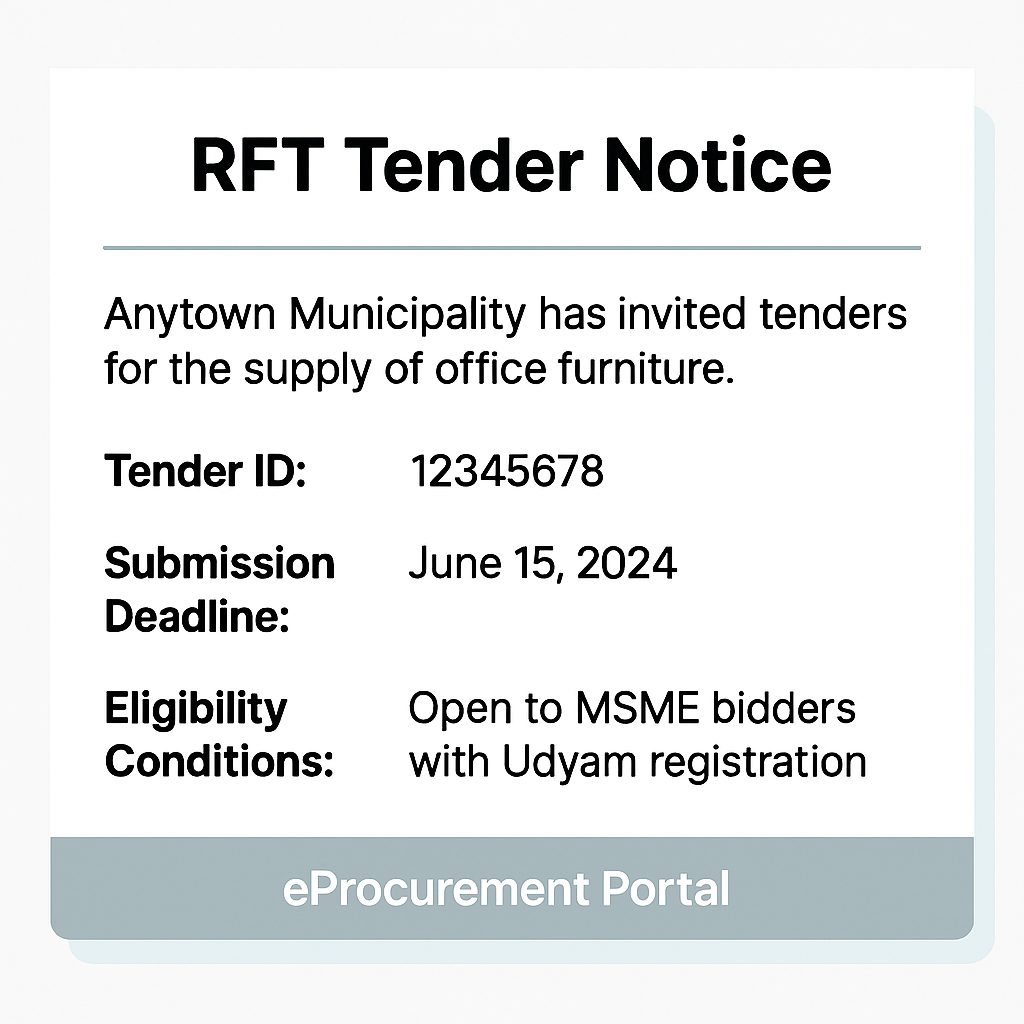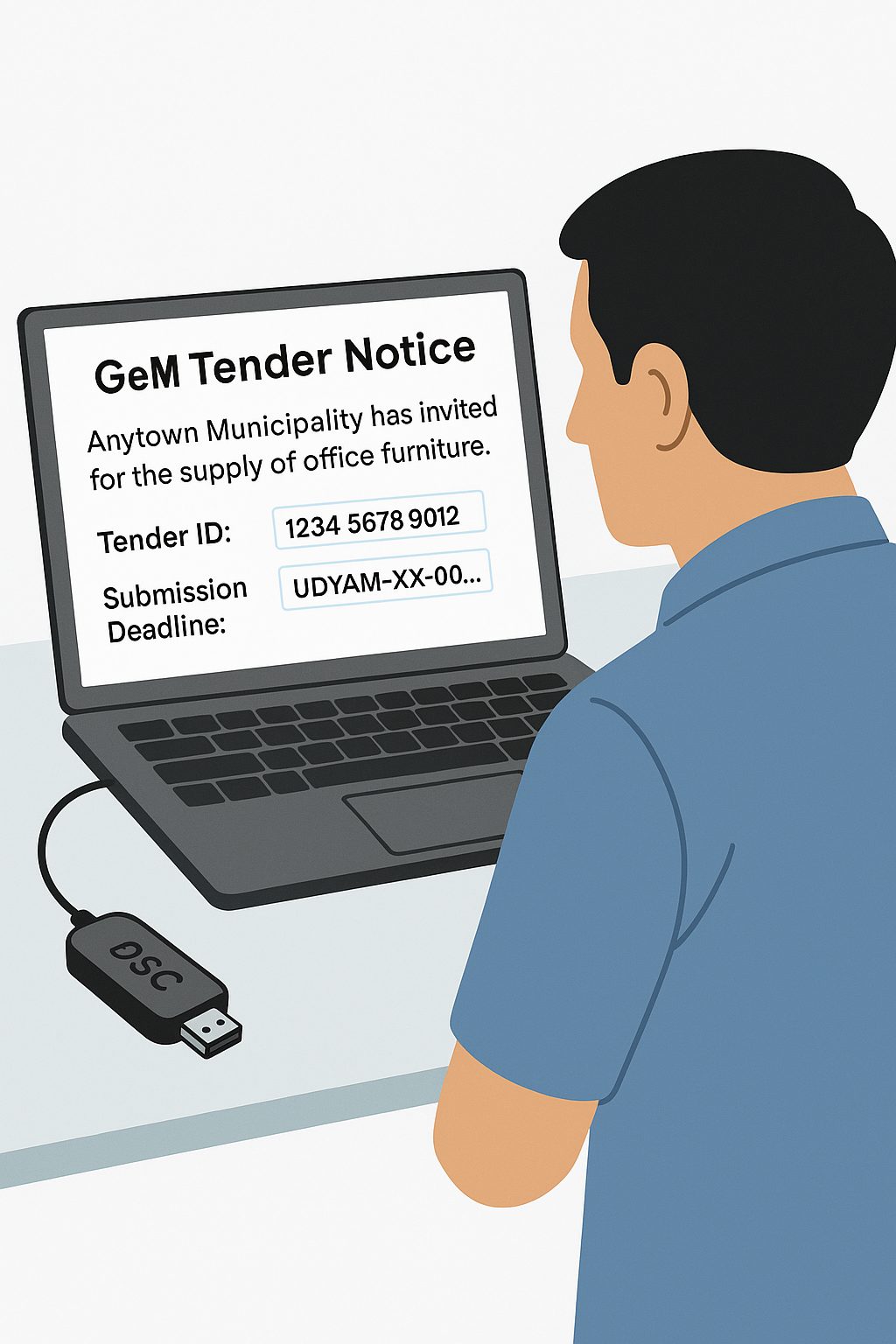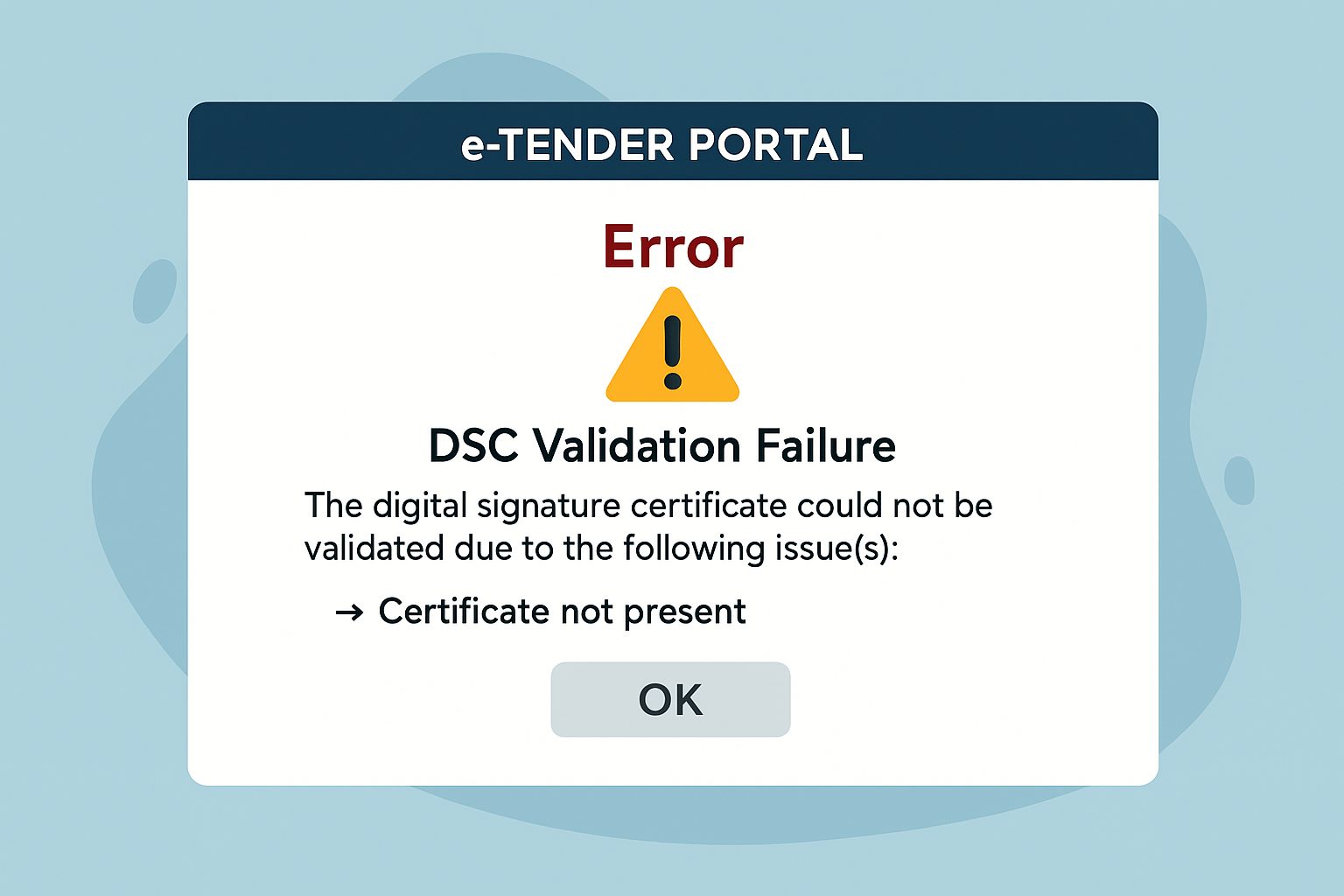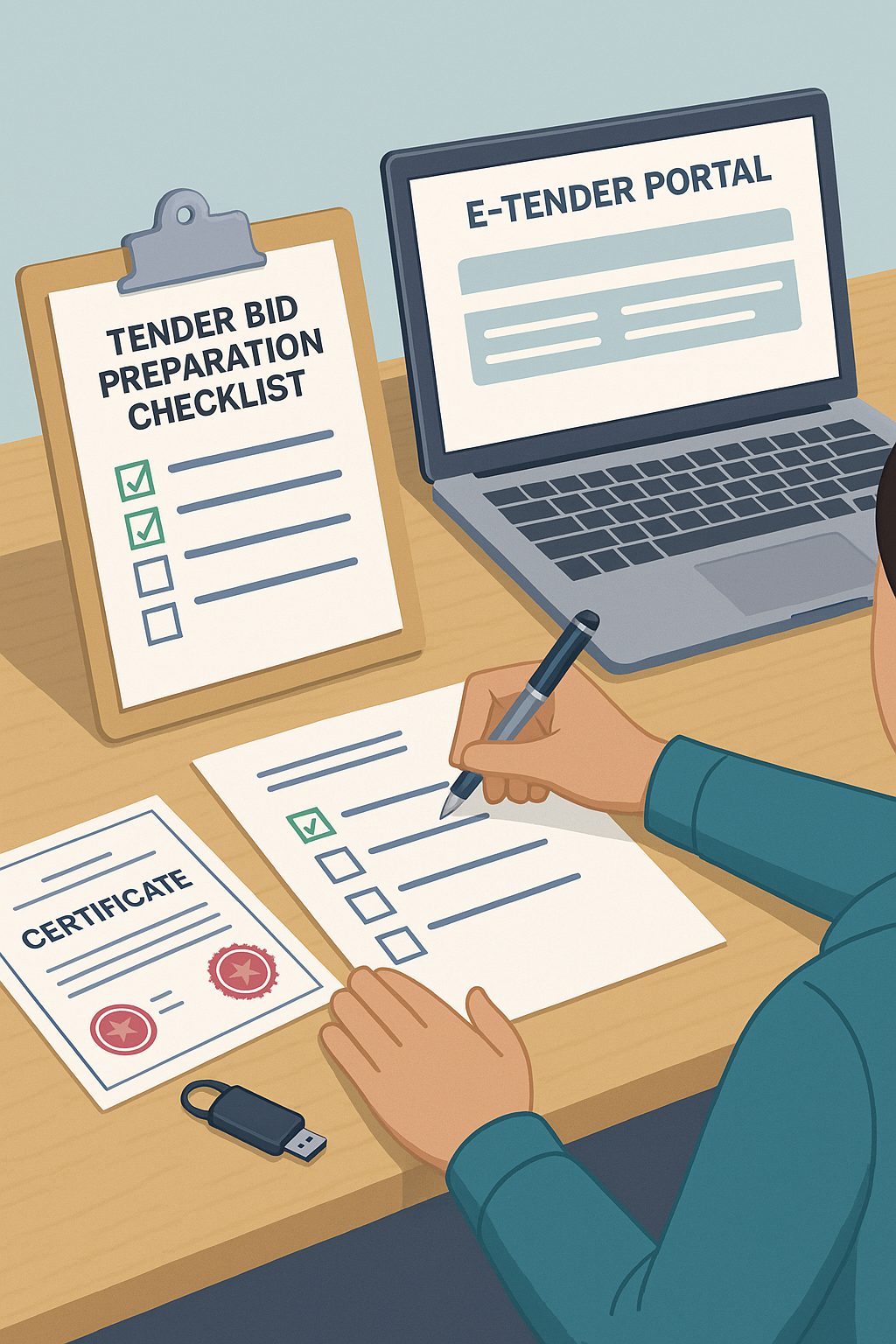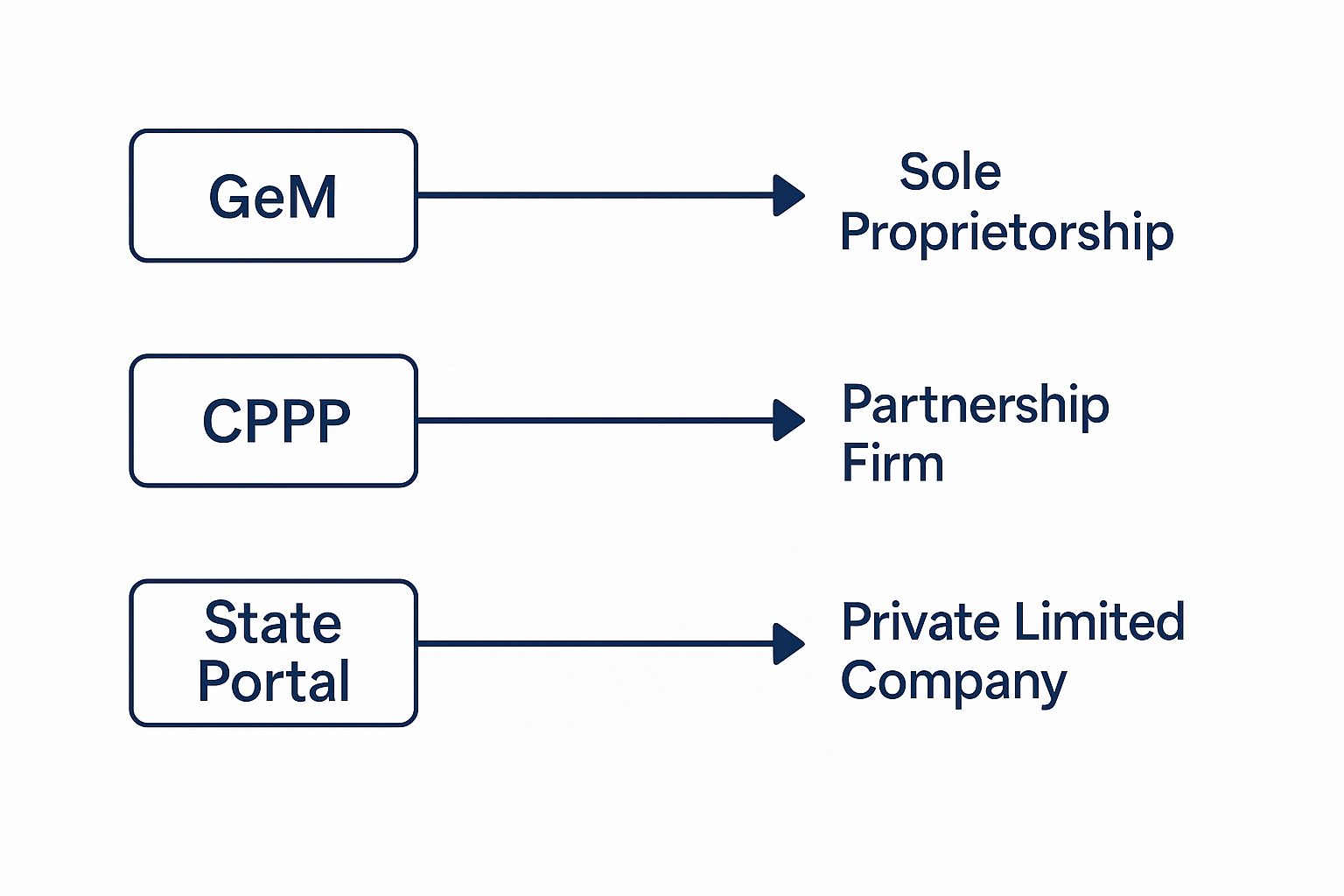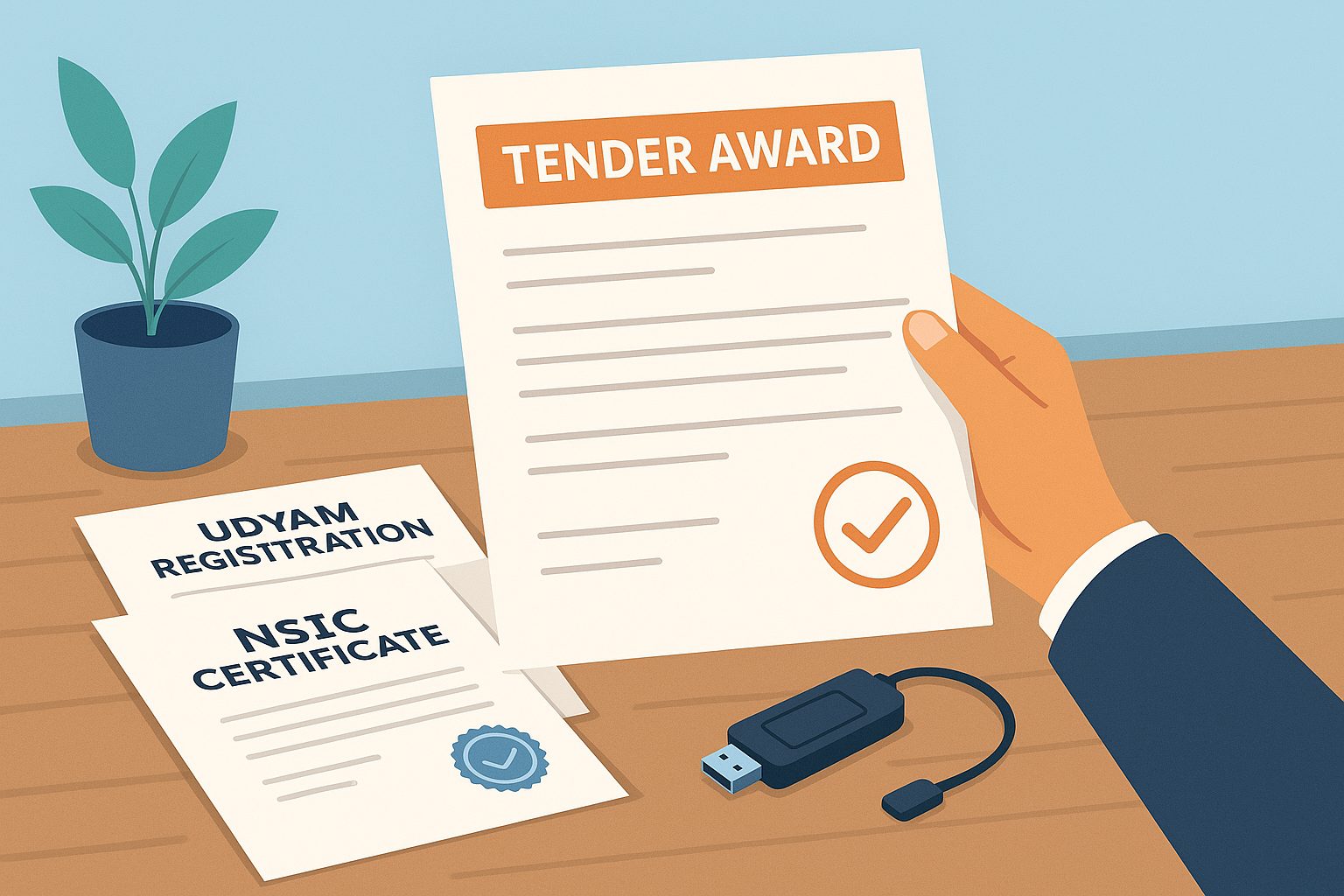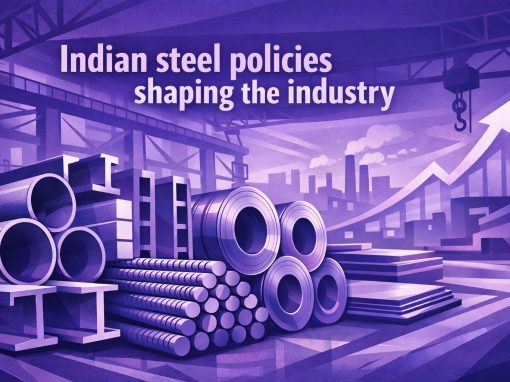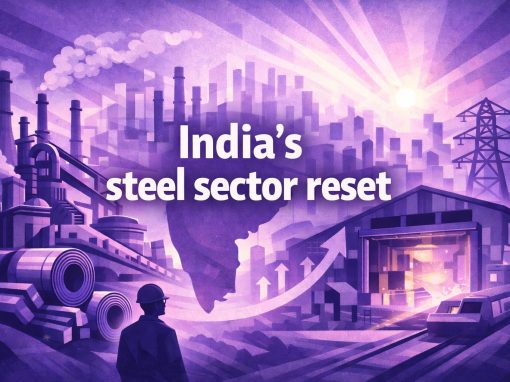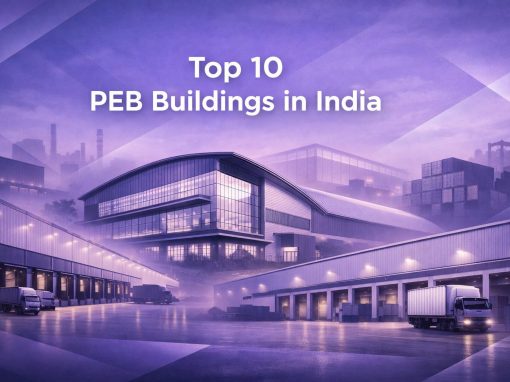Table of Contents
Every year, government departments in India release thousands of tenders. For micro and small businesses, these contracts can provide steady demand and long-term clients. Winning even one order can help a firm build credibility and cash flow.
The problem is that most first-time bidders do not know where to begin. Tender notices look complex. The wording feels bureaucratic. Acronyms appear everywhere, and one of the most confusing among them is RFT.
RFT, or Request for Tender, is not just another notice. It is the point where the buyer has already decided to purchase and expects complete bids. At this stage, a company must prove eligibility, submit documents correctly, and meet the deadline. Small mistakes—like a missing GST certificate, a mismatch in Udyam details, or a digital signature that does not upload—often lead to rejections.
This guide gives MSMEs a clear way forward. It explains what RFT means in practice, how to register on platforms such as GeM, CPPP, and state e-tender portals, and the common errors to avoid. The goal is to make the process easier, cut down on failed submissions, and help smaller firms compete with confidence.
What is RFT and Why It Matters for MSMEs
In every tender notice, one term shows up again and again: RFT. It simply means Request for Tender. For buyers, it is the point where they are ready to purchase. For suppliers, it is the stage where the bid has to be complete, correct, and on time.
This is not the same as an RFQ or an RFP. An RFQ is about prices. An RFP is about ideas and solutions. An RFT is different. The buyer already knows what they want. The tender spells it out in detail. Your task is to prove that your business meets those requirements.
For MSMEs, this stage is often where trouble starts. Bids are rejected because a turnover certificate was not uploaded, or because the GST details did not match the Udyam number. One vendor lost a state tender after the digital signature failed to validate at the last minute. These are not rare cases—they happen every week on GeM, CPPP, and state portals.
That is why RFT matters. It is the first serious step toward winning government work. If an MSME understands it clearly, prepares documents in advance, and avoids common errors, the chances of success go up sharply.
Registering on Key Tender Platforms (GeM, CPPP, State Portals)
For most MSMEs, the first hurdle is not the bid itself. It is registration. Without it, you cannot even see or respond to live RFTs. In India, three main platforms handle the bulk of government tenders: GeM, CPPP, and state e-tender portals. Each one has its own process and its own pain points.
GeM
GeM (Government e-Marketplace) is now the default platform for central procurement of goods and services. To register, an MSME must link Aadhaar, PAN, GST, and Udyam or NSIC details. The most common issue here is DSC or OTP failures during login. Many businesses assume a one-time registration is enough, but GeM also creates a bidder ID, and without that ID, you cannot participate in RFTs.
CPPP
CPPP (Central Public Procurement Portal) hosts tenders from ministries, PSUs, and departments. Vendors need to sign up through the eProcure system. The critical step here is the DSC mapping. If the DSC is not properly installed or has expired, the bid cannot be uploaded. Several vendors have faced rejections simply because their digital signature did not validate, even though all documents were ready.
State Portals
State portals vary widely. Some states use their own e-tender systems, while others rely on CPPP modules. The rules differ too. One state may ask for specific tax compliance forms, while another requires local registration. MSMEs often lose time because they assume that documents valid on GeM or CPPP will be accepted everywhere. That is rarely the case.
The bottom line is this: registration is not just about filling in basic details. Each platform has checkpoints. Missing one step—whether it is bidder ID on GeM, DSC mapping on CPPP, or local compliance on a state portal—can block access to an RFT altogether.
Common Rejection Causes in RFT Submissions
Most tenders are lost before they are even read. The rejection happens in the first screening, where the portal or evaluator checks if the bid is complete. The issues are usually small, but they carry heavy costs.
Missing or Wrong Documents
This is the single biggest reason. GST and PAN numbers that do not match. NSIC or Udyam certificates that are expired. Turnover statements without the right seal. The evaluator does not call to ask for corrections. If the file is wrong, the bid is marked non-compliant and dropped.
Digital Signature Problems
On GeM and CPPP, the DSC is the key to uploading. If it has expired, is not mapped correctly, or is installed on the wrong system, the bid does not go through. Many vendors discover this at the last minute. By then, the deadline has already passed.
File Format Mistakes
Every portal has strict rules. Some only accept PDF. Some limit file size. Scanned copies that are blurred or cropped are rejected. A supplier in Gujarat lost a mid-sized contract because its balance sheet was uploaded in JPEG format. The system did not even accept it for review.
Last-Minute Submissions
The tender portal slows down close to the deadline. Files take longer to upload. Vendors who wait until the final hour often miss by a few minutes. The system closes on time, and the bid is automatically locked out.
These errors are common. They have nothing to do with pricing or capability. They are simple checks. If MSMEs prepare early and upload ahead of time, most of these rejections can be avoided.
How MSMEs Can Improve Tender Success Rates
Most MSMEs lose tenders because of basic errors, not because of price. Improving success is about discipline, not complexity.
Keep Papers Ready
Have GST, PAN, Udyam, NSIC, audited accounts, and turnover certificates in one place. Check expiry dates. If a document is outdated, renew it before the tender opens. Many bids are rejected because a certificate ran out a week earlier.
Claim MSME Benefits
Do not pay deposits if you qualify for exemption. Many tenders waive EMD for MSMEs. Some relax turnover or past experience rules. If you skip this, you lose money and reduce your chances. Always read the eligibility section closely.
Write to the Point
In technical sections, avoid jargon. State clearly what you supply and prove it with one or two past orders. Buyers look for confidence, not long paragraphs.
Upload Before Deadline
Do not wait till the last hour. Portals slow down and DSC errors appear. Submitting a day early gives time to fix problems. Vendors who upload late are the ones most often rejected.
Watch for Updates
Tenders often get corrigenda. Dates shift. New forms are added. If you miss these, your bid is outdated on submission. Log in and check the portal daily until the closing date.
Winning is not about clever tricks. It is about staying compliant, using the benefits available, and avoiding sloppy mistakes. MSMEs that build this routine see steady improvements in their success rate.
Choosing the Right Tender Platform for Your Business
MSMEs waste a lot of time chasing the wrong tenders. Each platform is different. Pick the one that matches your capacity.
GeM Portal
GeM is for standard goods and services. Office supplies, IT items, furniture, cleaning, security, repair services. If you sell products that are listed in catalogs, start here. Registration is simple but you must finish Aadhaar, PAN, GST, and Udyam linking. Do not stop at registration — create the bidder ID. Without it, you cannot apply.
CPPP (Central Public Procurement Portal)
This is where ministries and PSUs post contracts. Value is higher, paperwork is heavier. The biggest problem is DSC mapping. If your digital signature is not installed properly, the system blocks the upload. CPPP is better for MSMEs that already have experience or can handle larger supply orders.
State Portals
Every state runs its own system. Some copy CPPP, others run separate sites. Rules change from state to state. One may ask for VAT clearance, another for local registration. If your business serves a regional market, these portals are important.
How to Decide
- Sell catalog goods or services? Go to GeM.
- Want bigger central contracts? Use CPPP.
- Work in a single state? Focus on that state’s portal.
The wrong choice leads to wasted effort. The right choice gives you a better chance of success and builds confidence step by step.
Conclusion
RFT is the point where the buyer has already decided to buy. It is the stage that matters most.
Most MSMEs lose here, not on price but on basics. Wrong GST number. Expired DSC. File in the wrong format. Uploading too late. All preventable.
Keep papers updated. Claim MSME exemptions. Upload early. Check the portal for corrigenda. These habits cut rejection rates.
Choose your ground. GeM for standard goods and services. CPPP for bigger central projects. State portals for local supply. Do not chase all three at once. Focus where you fit best.
Government tenders are steady work. MSMEs that stay compliant and avoid careless errors move from first-time bidders to regular suppliers. Step by step, contract by contract.
Looking for the right government tenders for your business?
Tata nexarc helps MSMEs, manufacturers, and service providers find relevant government tenders across India. Discover tenders by location, category, or department, track deadlines, and get notified on time — with complete support to help you apply confidently.
FAQs
What is the difference between an RFT and a tender notice?
Do MSMEs need a digital signature (DSC) for every RFT submission?
Can a newly registered MSME apply for an RFT without prior experience?
How can vendors track corrigenda or updates in an RFT?
What happens if an RFT deadline falls on a public holiday?
Is there a fee to download RFT documents from portals?
What proof of MSME status is required in an RFT submission?
Can one MSME submit bids for multiple RFTs at the same time?
How are bids evaluated in an RFT?
Can RFT submissions be edited after upload?
Ananya Mittal blends a background in data science with a passion for writing, contributing to Tata Nexarc’s efforts in creating insightful, data-informed content for MSMEs. Her work focuses on exploring sector-specific challenges and opportunities across procurement, logistics, and business strategy. She is also involved in leveraging analytics to strengthen content performance and deliver actionable insights to India's growing B2B ecosystem.
